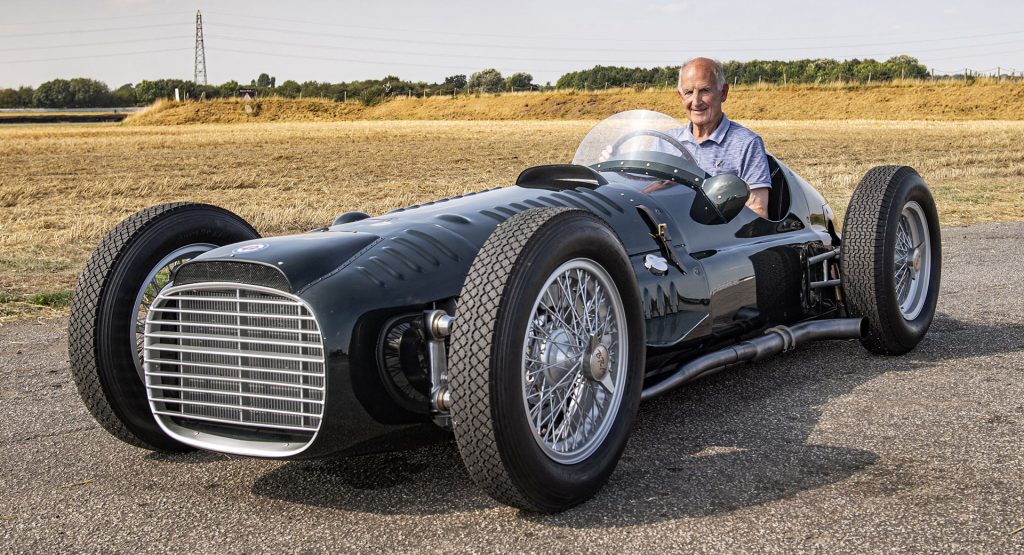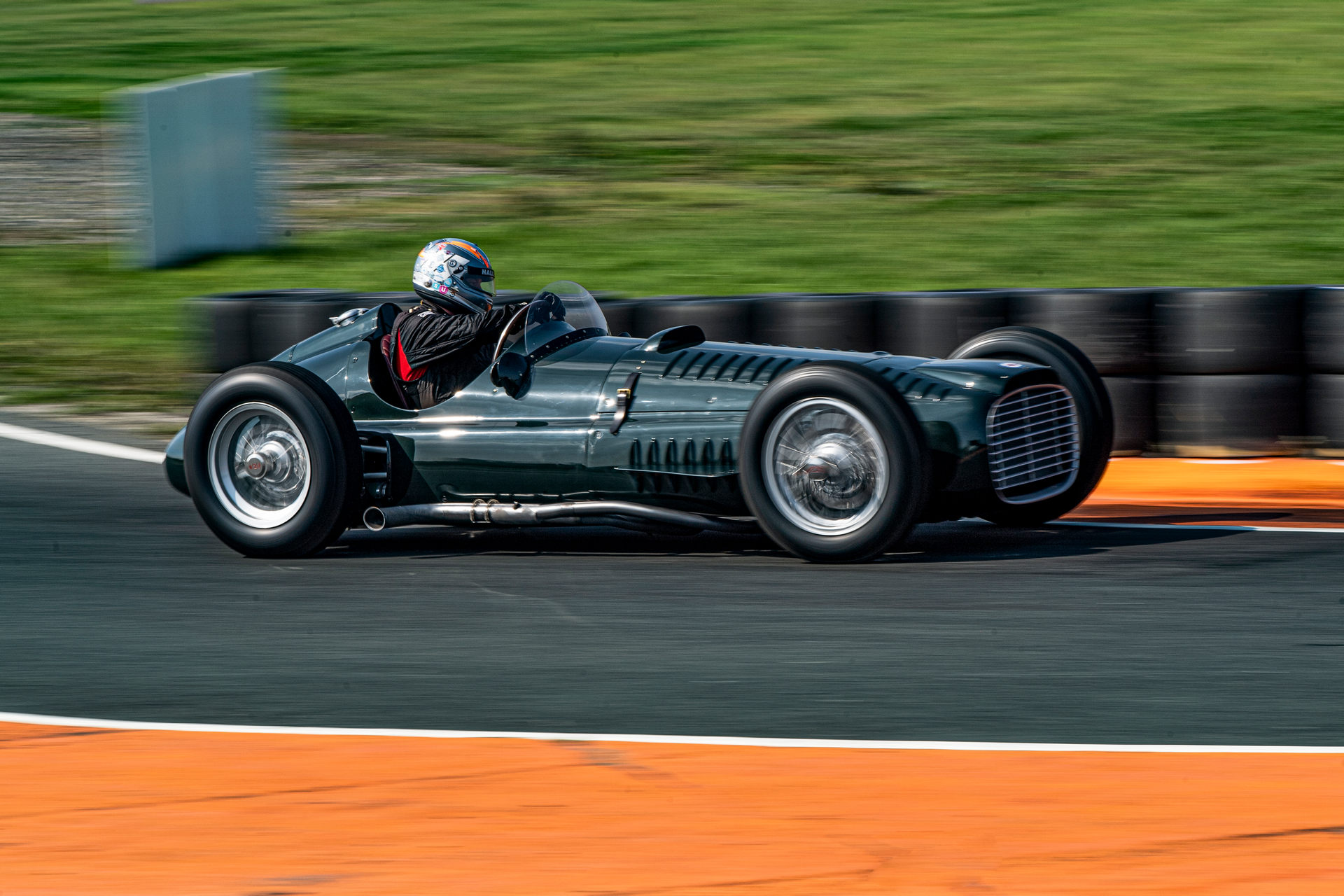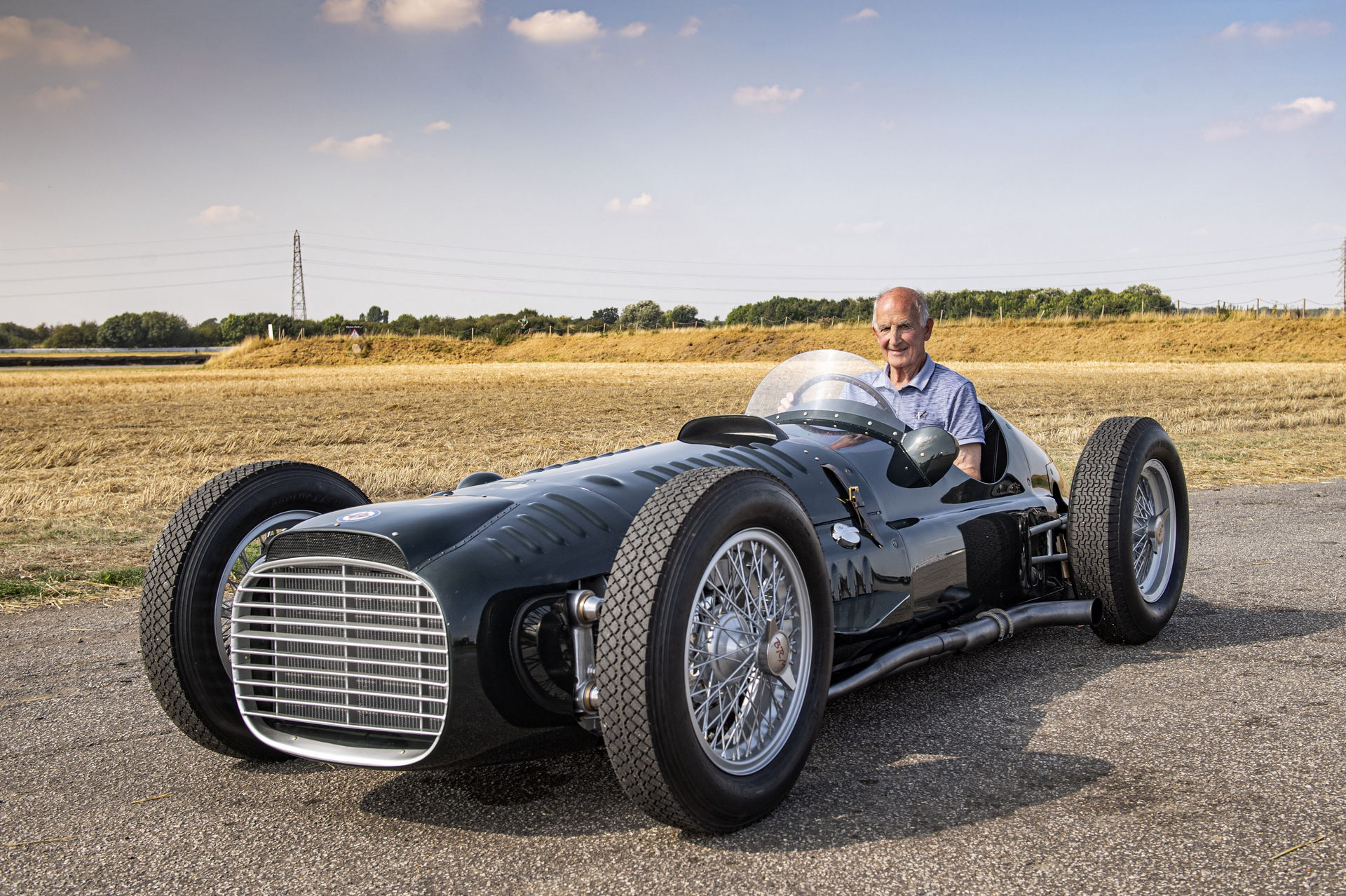British Racing Motors (BRM) has just unveiled its first of three continuation P15 V16 racing cars that has been built to celebrate the company’s 70th anniversary and is set to make its on-track debut at the Goodwood Revival running from September 17 to 19.
The project has been led by John Owen, the son of BRM Formula 1 team principal Sir Alfred Owen, who set about bringing the P15 and its famed V16 engine back to life. The three continuation cars will feature original chassis numbers that were assigned back in the 1950s but were not used.
Watch Also: See BRM’s 591 HP V16 Flamethrower Of An Engine Fire Up
This first of the three continuation cars is the first BRM P15 to have been built since 1953. It has been created using original post-war blueprints and comprises of more than 36,000 individually engineered parts. The famed 1.5-liter supercharged V16 alone features more than 4,000 components, many of which had to be individually manufactured by the team.
The engine revs to 12,000 rpm and pumps out 591 hp. It has been built by specialist engineers from Hall and Hall and was recently tested for the first time at Blyton Park racetrack in Lincolnshire.
“Hearing that V16 engine again after so many years, was an incredible moment, and a dream come true,” John Owen said. “It’s a tribute to the tremendous skill, persistence and attention to detail of the engineering team at Hall and Hall, and I really can’t wait to unveil the car at the Goodwood Revival.”
“This has been an incredible journey for all of us at Hall and Hall,” added former BRM F1 team engineer Rick Hall. “We have worked closely with BRM ever since I joined the team at the end of ’72, and we needed every bit of that experience to bring this truly awesome racing car to life. It took two years, from original blueprint right up to shakedown, but there are no shortcuts when you’re working to the level of quality, detail and authenticity we needed.”
“With the first of the three new Mk1 V16 now complete, we will turn our attention to the two remaining chassis numbers,” he added. “With all the technical hurdles now safely overcome, we are supremely confident we can create a truly magnificent, brand new, historically authentic yet entirely raceable 1950s Formula 1 car.”





